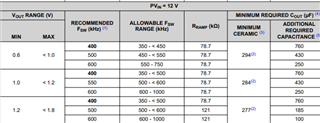Hello
My customer is designing a POL using TPS543C20A for Vin=12V, Vout=1.2V and Iout(max)=12.28A.
They run WeBench steady state simulation, but are seeing large Inductor current spike as the attached results.
Where this spike comes from?
Do they have to use such an Inductor having large rated current to cover this spikes?
Or any ways to suppress the spikes?
WBDesign771_Steady State-1.pdf
Best regards,
K.Hirano
-
Ask a related question
What is a related question?A related question is a question created from another question. When the related question is created, it will be automatically linked to the original question.


